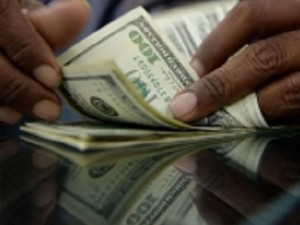
Financial markets proved as fickle as ever as short-term investments fled the country in September, not because of a decline in investors’ confidence in the economy, but due to profit-taking by fund managers. AFP FILE PHOTO
MANILA, Philippines–Financial markets proved as fickle as ever as short-term investments fled the country in September, not because of a decline in investors’ confidence in the economy, but due to profit-taking by fund managers.
The Bangko Sentral ng Pilipinas (BSP) on Thursday said that the country’s five-month streak of net inflows of “hot money” was broken in September. Last month’s result was in contrast to a net inflow of foreign portfolio investments seen in September of 2013.
“Transactions for the month resulted in overall net outflows after five months of net inflows starting April 2014 due to profit-taking,” the BSP said in a statement.
Apart from profit-taking, the BSP said investments went down as a result of what bankers called the “taper tantrum,” referring to investors’ reaction to the US Federal Reserve’s plan to reduce its stimulus for the American economy.
Data showed that net outflows reached $324.12 million in September. The month before, $483.45 million worth of investments came into the country.
Net inflow meant that more investments came in than went out.
Portfolio investments, often referred to as “hot money” because of the speed at which they enter and exit markets, often serve as an indicator of how the international market perceives an economy.
But this is done with much discretion because, as the “hot money” nickname suggests, fund managers tend to act on impulse.
Hot money investments come in the form of investments in the local stock market, subscriptions to bond issuances, or the purchase of deposit certificates offered by local banks.
Gross investments for the month reached $2.1 billion, the BSP said, down 17.5 percent year on year.
These investments were more than enough to offset the withdrawals that reached $2.47 billion.
The United States, the United Kingdom, Singapore, Luxembourg and Ireland were the top five sources of inflows, accounting for 80.4 percent.
The money went mainly to holding firms, banks, home and office builders, and food, beverage, and tobacco manufacturers.
Meanwhile, 77.5 percent of investments went to the United States.